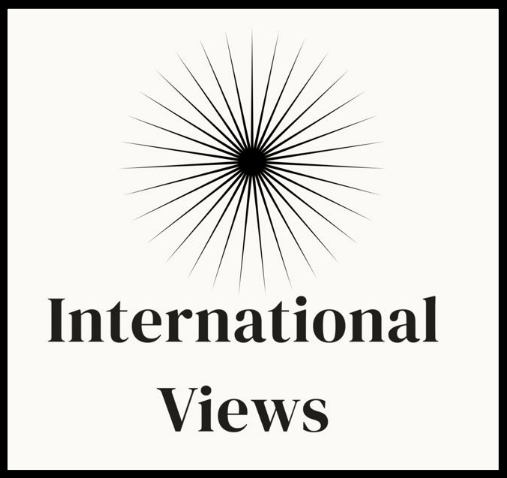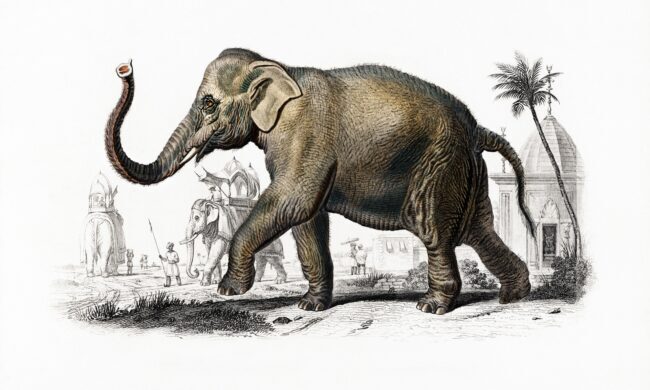On Indian Exceptionalism
Unorthodox births are common in religion and literature because they set the stage for how characters navigate the world, as if some natal quirk gave them the power to act uniquely. This is the case with Saleem Sinai, the protagonist of Salman Rushdie’s Midnight’s Children, who was born with supernatural powers at the exact time India became an independent country at midnight between the 14th and 15th of August 1947, hinting that India’s birth was also exceptional.
2022 marks 75 years of Indian independence, so it is an apt time to examine its foreign policy trajectory in these years and to think about how it has carried the weight of its exceptional birth since 1947. The path and circumstances of Indian independence have left a firm legacy on Indian foreign policy since then, though some have tried to erase it.
…
In a 1919 letter, Rabindranath Tagore, the first non-European Nobel laureate in literature, told Mahatma Gandhi that India’s freedom would come “when she can prove she is morally superior to the people who rule her by their right of conquest.”1“23a. Letter from Rabindranath Tagore,” The Selected Works of Mahatma Gandhi, https://www.mkgandhi.org/selectedletters/23a_rabindranath_tagore.html. This moral narrative shone through Gandhi’s swadeshi movement of Indian self-sufficiency and his iconic khadi robes, a striking visual symbol separating his ascetic morality from the corrupt excess of the coloniser.
Though the historical facts are much more complex than commonly described – Indian independence was far from bloodless – its birth from a narrative of morality and non-violence marked a unique arrival into the international system, and this reverberated through the newly formed state’s bureaucratic structures.
The foreign service acquired an ethos which would dictate how India was represented internationally: in 1966, an internal committee report noted a tendency in its diplomats to “assume an attitude of self-righteousness,” which caused “some irritation abroad.”2Exceptionalism in Indian Diplomacy: The Origins of India’s Moral Leadership Aspirations (South Asia: Journal of South Asian Studies, 2014). An exceptionalist moral culture characterised Indian diplomacy – almost to a fault – and this manifested itself overtly in its policies.
This was particularly the case in India’s leadership of the Non-Aligned Movement (NAM), a group of countries who refused to be pulled into the orbit of either superpower during the Cold War. During the 1950s and 60s it was influential in disarmament and decolonisation struggles, with an anti-hegemonic philosophy that managed to bring about important changes to international institutions.
These changes were helped along in no small part by Indian diplomacy. At the UN General Assembly’s first meeting in 1946, India’s representative, Vijaya Lakshmi Pandit – future Prime Minister Jawaharlal Nehru’s sister – introduced a formal complaint to the session to test the newly-formed organisation’s founding Charter principles. South Africa had recently passed the Asiatic Land Tenure and Indian Representation Act that same year, limiting property and voting rights of people of Indian origin.
Pandit argued that the legislation violated article 1(3) of the United Nations Charter, the responsibility to promote “respect for human rights and for fundamental freedoms for all without distinctions as to race,”3United Nations, Charter of the United Nations, 24 October 1945, 1 UNTS XVI, available at: https://www.refworld.org/docid/3ae6b3930.html, 3. and she called for action against the Apartheid government. Supported by Mexico, France and, eventually, the United States (after a wording compromise) the resolution passed by the required two-thirds majority. This was significant as the first test of the UN which helped give legitimacy to the organisation by recognising, in Pandit’s words, the “millions of voiceless people who, because of their creed or colour, have been relegated to positions of inferiority.”4In Ryan M. Irwin, “Imagining Nation, State, and Order in the Mid-Twentieth Century,” Kronos: Southern African Histories, no. 37 (November 2011), 18.
The Indian delegation helped demonstrate that the UN could be used effectively to debate issues of importance to the Global South and to mobilise anti-colonialism institutionally. To this point, Indian diplomat K.M. Munshi emphasised India’s role in “form[ing] the conventions of world self-rule,”5Kanaiyalal Maneklal Munshi, Our Greatest Need and Other Addresses (Bombay: Bharatiya Vidya Bhavan, 1953), 216. and the importance of the UN in birthing the ‘Third World’ idea – initially a term describing countries outside the American and Soviet blocs – which would express itself most fully through the NAM.
…
Eschewing great power politics to champion the post-colonial cause harked back to Tagore’s words: India was winning a battle of independence on behalf of other states as well by placing itself morally above the Cold-War squabbles of the superpowers, allowing its political voice to punch far above its economic weight.
After his election in 1950, though, Prime Minister Nehru began to play some power politics that Gandhi had avoided: while the Mahatma had said that ‘the message of Asia’ was “not to be learned through Western (glasses) or by imitating the atom bomb (…) it is up to you to tell the world of its wickedness and sin,”6Leonard Weiss, “India and the NPT,” Strategic Analysis 34, no. 2 (2010). Nehru’s pragmatism made him more open to the nuclear question.
He balanced moral exceptionalism with a belief that an unpredictable world might lead India in unwanted directions. Though his nuclear vision was peaceful, he stated that “no pious sentiments of any of us will stop this nation from using it [for other purposes].” This approach both asserted the fundamental exceptional qualities of India while reminding the world it was too big to push around.
Seeing threats at India’s gates, Nehru’s daughter and Prime Minister , Prime Minister Indira Gandhi’s 1971 treaty with the Soviet Union ushered in an era where forceful pragmatism unseated the singular qualities that had set the country apart at birth. Whether the dual threat of Pakistan and China necessitated this shift is beside the point: India had chosen to enter the great power game.
A loss of moral stature happened at home, too, as a result The Emergency, a 21-month period between 1975 and 1977 where Indira Gandhi’s consolidated government powers under the pretence of protecting the country from internal subversion.
Human rights abuses were widespread during the period: from police detentions without charge, the torture of political prisoners, media takeover by the state, the destruction of trade unions, and the demolition of slums in Delhi which displaced 700,000 people. In what was perhaps the most abhorrent policy of the period, 8.3 million people were sterilised to limit population growth, including forced or economically-coerced procedures:
Middlemen like police officials, district authorities, and tax officials along with the doctors themselves feared losing their jobs or facing salary cuts if the target number of people weren’t sterilised … Eventually, the onus of sterilisation on men was reduced and women were more often forced into it … women saw lesser compensation for the sterilisation themselves, sometimes not receiving any at all. Up to two thousand people died in this drive officially.7“Looking Back At The History Of Forced Sterilisation In India And Why It Concerns Us Even Today,” Feminisim in India, https://feminisminindia.com/2020/09/04/history-of-forced-sterilisation-concerns-us-even-today/.
Midnight’s Children, again, provides an apt allegory here. As The Emergency develops, Saleem Sinai comes to a realisation:
Here is the secret which has lain concealed for too long beneath the mask of those stifled days: the truest, deepest motive behind the declaration of a State of Emergency was the smashing, the pulverising, the irreversible discombobulation of the children of midnight.
By seizing authoritarian power, Indira Gandhi was overthrowing the ethos of India’s birth and what had kept it away from the dubious ethics of the Cold War. But to Gandhi, this essence was also what kept India – and her – from greatness, and so must be repressed.
She died on 31 October 1984, killed by her two Sikh bodyguards in revenge for Operation Blue Star, a week-long siege of the Golden Temple, the holiest site for Sikhs. The temple had become a fort for Sikh militants seeking greater autonomy from the state, and the operation caused between 18 and 20 thousand civilian Sikh casualties.
Presidency of the NAM had passed to India in 1983, but the narrative of conscientious neutrality could not be rescued, given its domestic strife and a military buttressed by the Soviets. It could hardly claim the high ground or to represent the ‘Third World’, and its international voice softened accordingly.
These two currents – the high-minded moralist exceptionalism and the pragmatic muscularity – have since jostled for competition in determining India’s foreign policy.
…
Since the 1980s, India’s GDP per capita (adjusted for inflation) ballooned from between 500-1000 dollars, where it had stagnated for over a century, to 7000 in 2019. India’s population is expected to overtake China’s by the end of this decade. Arguably, though, this serves only to highlight how much India now punches below its weight when compared to its economic and geographic equals. It is big but not yet great; it has exceptional qualities, but they aren’t setting the country apart.
What can India do to make up this deficit? A ‘big country’ plus ‘exceptional quality’ equals a great power. One area where India has adopted this equation is in its nuclear policy: after its nuclear test in 1998, India briefly became somewhat of pariah state, but it has since been afforded unprecedented legal exceptions in the trade of nuclear technology despite not being a member of the Non-Proliferation Treaty. Recent nuclear ambitions nestled themselves in a long history of restraint, serving to allay international concerns about how these weapons might be used. India has de facto joined the nuclear in-circle through a history of actions tied to its exceptional qualities and leaders.
The equation must be carried forward if India is to work to regain its political influence instead of being just a big country with a good historical record. While India’s voice had overperformed internationally as one of the leaders of the NAM, Modi only addressed the organisation when faced with the immediate crisis precipitated by COVID, leading to accusations of India only valuing the organisation for material support and personal gain.
The NAM is searching for purpose in a post-Cold War world and India, as its most powerful member1, could gently mould it according to its own interest, perhaps rekindling the discourse about the inequality between states that the NAM had once championed. Voicing support for these causes would gain international backing from swathes of UN General Assembly members, bolstering its campaign for a permanent Security Council seat.
This approach could open other doors. By highlighting its ability to find common cause with other states it could also use the unique syncretic capabilities which diplomat and historian K. M. Panikkar encapsulated when meditating on the meaning of ‘Indian culture’, “the desire to absorb and assimilate and thereby create a new culture”.
It’s more easily said than done, but the ability to engage with conflicting ideas and stances could serve India well positioning itself as a power-broker and mediator. It could increase engagement with the South Asian Association for Regional Cooperation and strengthen ties with ASEAN, and this would its influence in the region, and lay the foundation for alliances that could serve it well in containing China’s regional ambitions
While India’s influence has declined as the decades have gone by, a unique birth narrative has infused it with singular qualities now under-utilised. It is not yet great, but its hefty capabilities will multiply if it restores itself as an advocate for the Global South and a critic of today’s international hegemons.

